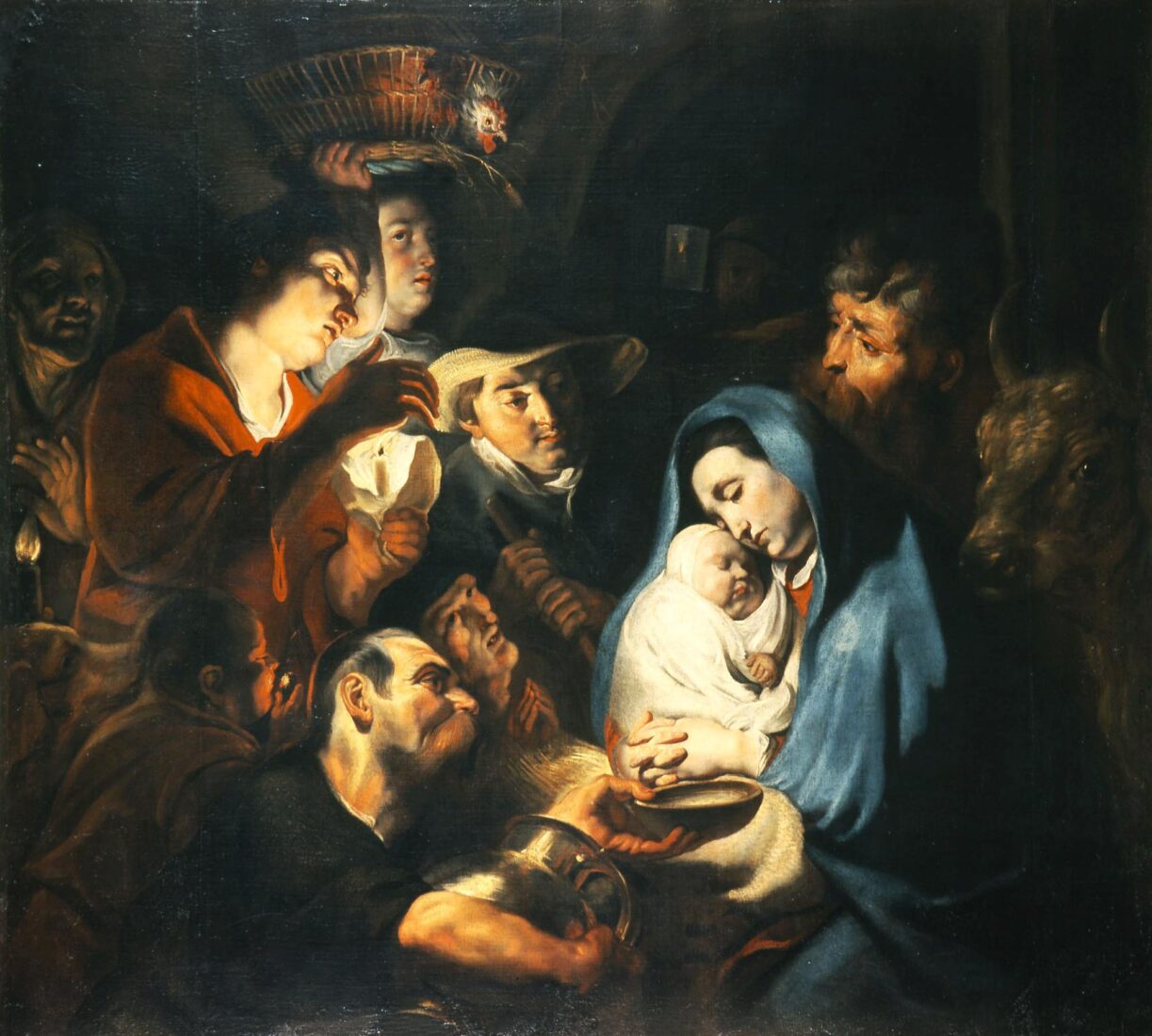We use cookies to make our site work properly, to personalize content and ads, to provide social media features and to analyze our traffic. We also share information about how you use our site with our social media, advertising and analytics partners. Read the Cookies Policy.

The Adoration of the Shepherds, ca. 1615 - 1616
Oil on canvas, 151 x 168 cm
Alexandros Soutzos Bequest
After the 16th century the Adoration of the Shepherds became one of the painters’ favorite themes in the Low Countries, while during the 17th, and particularly in Rubens’s work, it was enriched with the presence of female figures. According to the Evangelist Luke (2, 15-21) “Hastering there, the shephers found Mary, Joseph and Infant, lying in his crib”. In his work Jordaens depicts the moment when the shepherds, the young shepherds and shepherdesses are adoring the Holy Infant. The infant, however, is not in his crib but rather asleep in his mother’s arms. The composition is focused on the human relationship between mother and child. Wrapped in a blue cloak, the Virgin Mary is tenderly holding her baby, who, serene and secure, sleeps on her shoulder. Her head turned to the side, in the pose known as “Our Lady Sweetly-Kissing”, it rests on his forehead. The two of them appear to be cut off from all that is going on around them. Joseph is standing behind her while the donkey next to him indicates the participation of the animals in the scene. To their left a group of shepherds, young shepherds and shepherdesses are gazing devoutly at the Divine Infant. Indeed, one shepherd on the primary plane is offering him a bowl of milk while a woman to the rear is bringing a rooster in a farm basket. The scene takes place at night and is lit by a candle held by a young shepherd on the left. Its light spreads over the faces of the two central figures creating a delicate chiaroscuro effect which infuses the main theme with a sense of tranquility. Conversely, there are strong contrasts of light and shadow on the shepherd’s faces, thus increasing the feel of mystery this moment is imbued with.
The similarities between this work and the one at the Metropolitan Museum of Art in New York (“The Holy Family with Shepherds”) from 1616, lead us to the conclusion that this must have been done around 1615-1616. The composition, furthermore, follows the example set by Italian art, which was well-known in Antwerp, especially after Rubens returned from Italy, and this was the style Jordaens painted in, at least in the early stages of his career.

